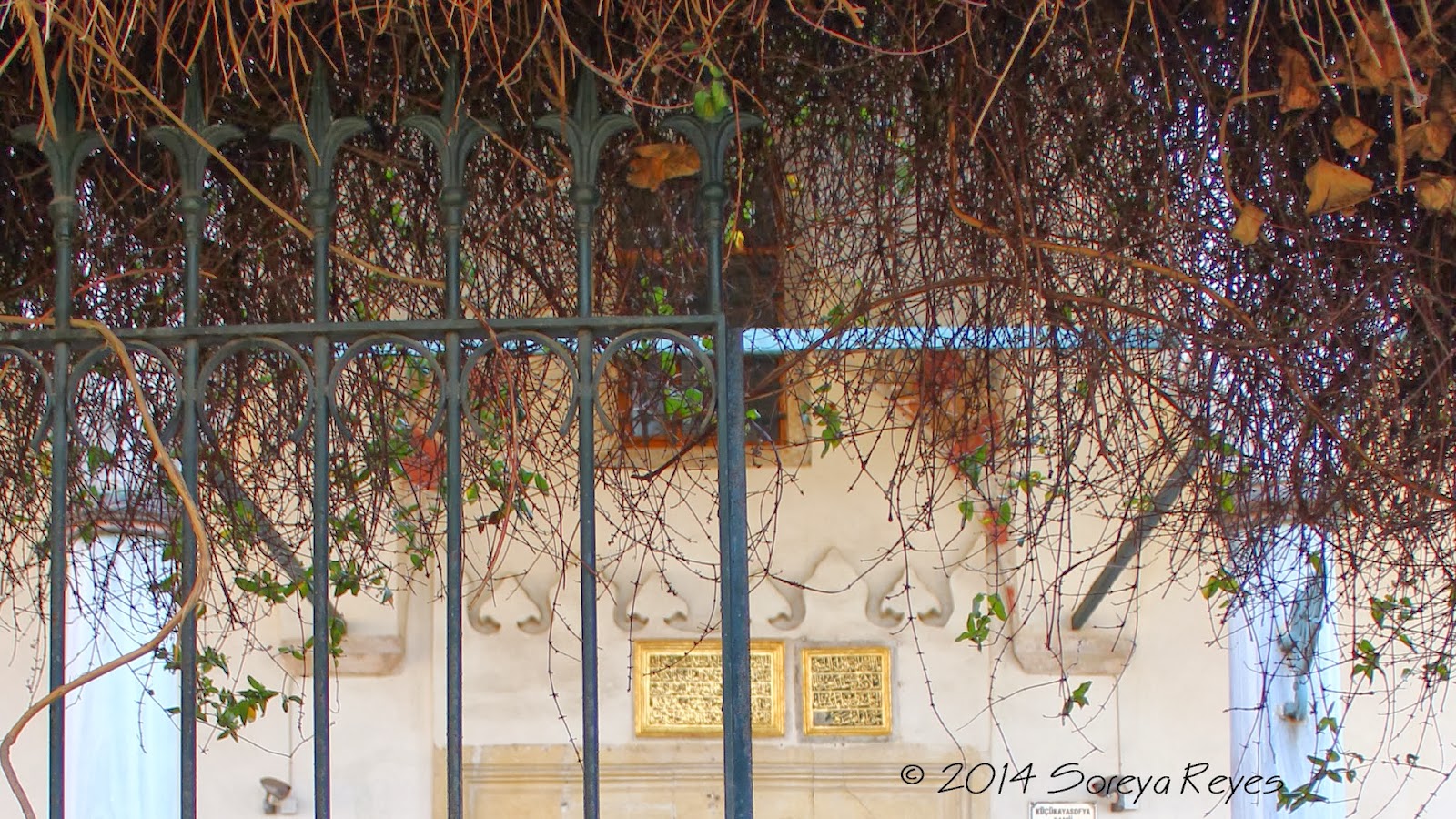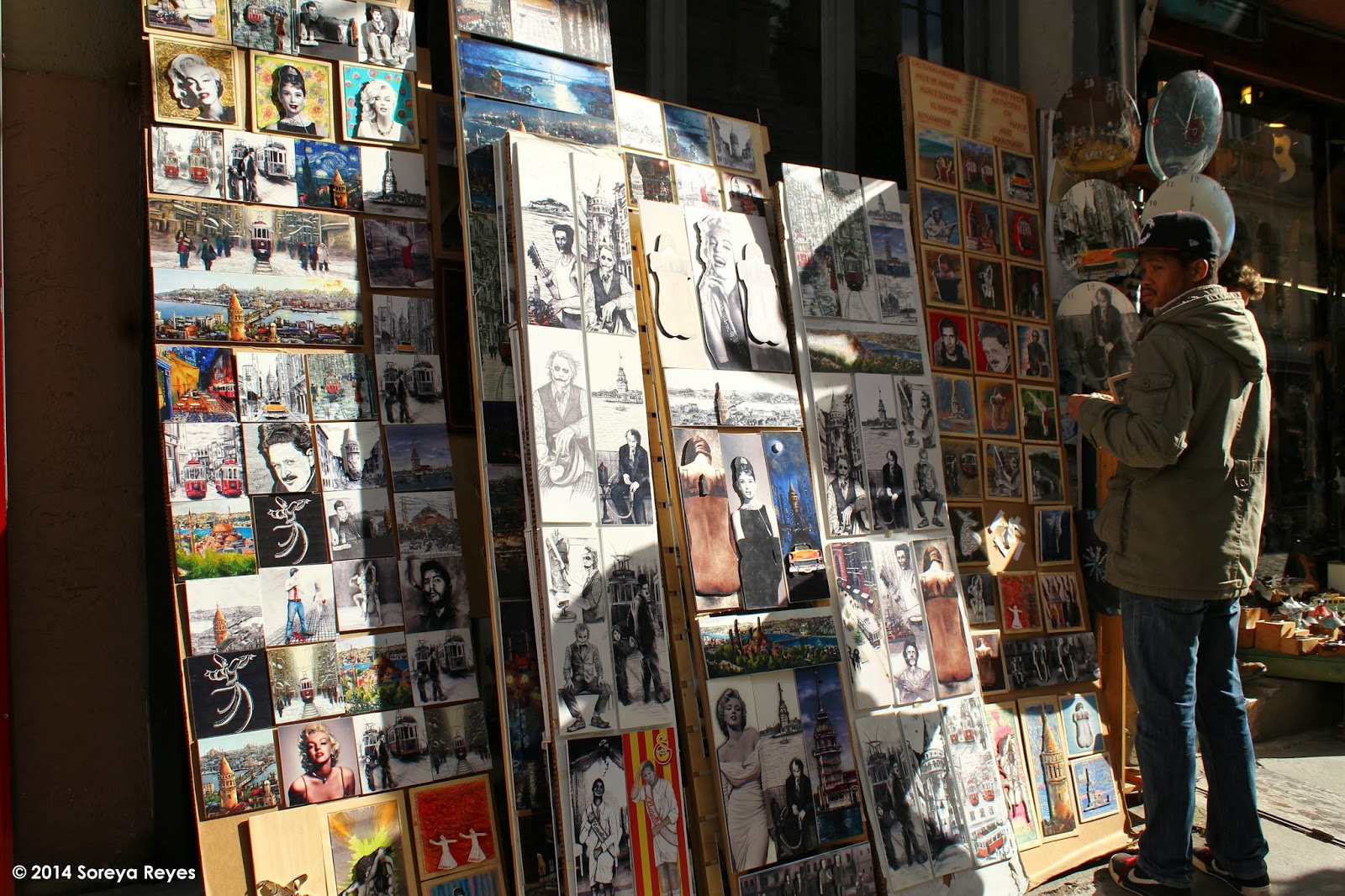Today's photo trek is going to take us to Littie Hagia Sophia (Turkish: Küçük Ayasofya Camii). The building stands in Istanbul, in the district of Fatih and in the neighborhood of Kumkapı, at a short distance from the Marmara Sea, near the ruins of the Great Palace and to the south of the Hippodrome. It is now separated from the sea by the Sirkeci-Halkalı suburban railway line and the coastal road, Kennedy Avenue.
To get there you can take a tramway to Sultanahmet- Blue Mosque and then walk south of the Hippodrome towards the sea. You will find your way to there.
Küçük Ayasofya Camii in winter.
Little Hagia Sophia, formerly the Church of the Saints Sergius and Bacchus (Greek: Eκκλησία τῶν Άγίων Σεργίου καί Βάκχου ὲν τοῖς Ὸρμίσδου), is a former Eastern Orthodox church dedicated to Saints Sergius and Bacchus in Constantinople, converted into a mosque during the Ottoman Empire.
This Byzantine building with a central dome plan was erected in the sixth century by Justinian, likely was a model for Hagia Sophia (St. Sophia), and is one of the most important early Byzantine buildings in Istanbul. It was recognized at the time as an adornment to the entire city, and a modern historian of the East Roman Empire has written that the church, "by the originality of its architecture and the sumptuousness of its carved decoration, ranks in Constantinople second only to St. Sophia itself".
.
Interior

Two storey colonnade.
Inside the edifice there is a beautiful two-storey colonnade which runs along the north, west and south sides, and bears an elegant inscription in twelve Greek hexameters dedicated to the Emperor Justinian, his wife, Theodora, and Saint Sergius, the patron-saint of the soldiers of the Roman army. For some unknown reason, Saint Bacchus is not mentioned.
Hexameter Dome.
The columns are alternately of verd antique and red Synnada marble; the lower storey has 16, while the upper has 18. Many of the column capitals still bear the monograms of Justinian and Theodora.

Column detail and northern part of the dome.
Colonnades.
Detail columns.
Monograms of Justinian.
Window facing the Railrad and the Marmaray sea.
View of the main entrance hall from the stairs.
Entrance step way.
.
Exterior
The exterior masonry of the structure adopts the usual technique of that period in Constantinople, which uses bricks sunk in thick beds of mortar. The walls are reinforced by chains made of small stone blocks.
The building, the central plan of which was consciously repeated in the basilica of San Vitale in Ravenna and served as a model for the famous Ottoman architect Mimar Sinan in the construction of the Rüstem Pasha Mosque, has the shape of an octagon inscribed in an irregular quadrilateral. It is surmounted by a beautiful umbrella dome in sixteen compartments with eight flat sections alternating with eight concave ones, standing on eight polygonal pillars.
Minaret.
The narthex lies on the west side, opposed to an antechoir. Many effects in the building were later used in Hagia Sophia: the exedrae expand the central nave on diagonal axes, colorful columns screen the ambulatories from the nave, and light and shadow contrast deeply on the sculpture of capitals and entablature.
North of the edifice there is a small Muslim cemetery with the türbe of Hüseyin Ağa, the founder of the mosque.
Fountain.
In front of the building there is a portico (which replaced the atrium) and a court (both added during the Ottoman period), with a small garden, a fountain for the ablutions and several small shops.
Portico door to the ablution fountain.
Patio with littie book stores.
Wall sorrownding Little Hagia Sophia.
.
Sorrowndings
Walking by the neighborhood of Kunkapı you can find quite interesting buildings. I have to say I had as much fun outside than inside the Küçük Ayasofya. I thought to share with you some of my favorite shots during the walking.
İn front of the entrance to Littie Hagia Sophia.
The beauty in chaos.

Simit.
Tearing apart.
Facing Küçük Ayasofya.
Old Wooden houses.
Soreya Reyes
Ps. If you are interested in a photo guide trek in Istanbul inbox for more info:
























































































